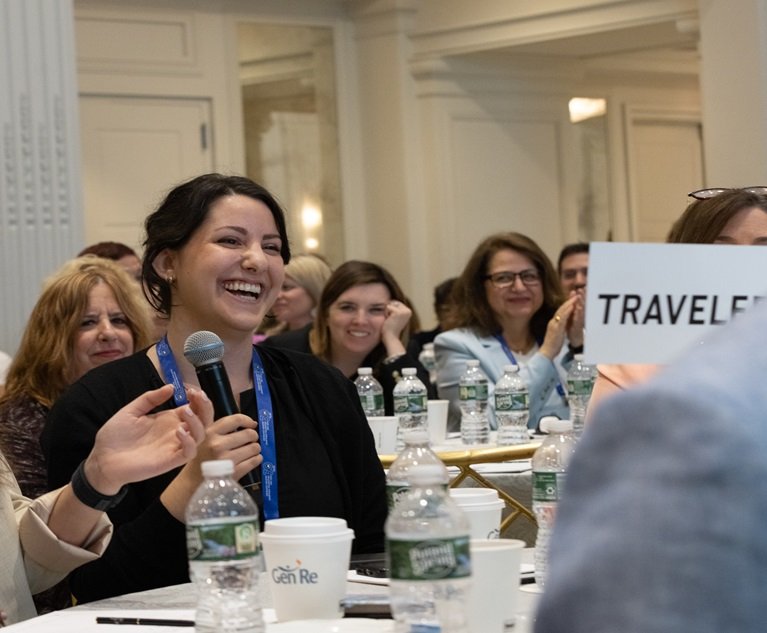Jurys Out On Length Of Hard Market
|It seems like it was over before it even began. No sooner didpeople start declaring the turn to a hard insurance market, thanthe predictions came flooding in that higher rates and tightercoverage terms would soon give way to soft market pricing andunderwriting.
|At a recent meeting of the Kansas City, Mo.-based NationalAssociation of Professional Surplus Lines Offices, Ltd., like everyother industry conference in the past few months, a panel ofexperts gave the hard market, at most, a year-and-a-half-to-twoyears to play out.
|Bob Cohen, senior vice president of sales and marketing forUnited National Insurance Company in Bala Cynwyd, Pa., recalledthat the duration of each of the last two hard markets–from1974-to-1977, and from 1984-to-1986–was only three years,suggesting that the property-casualty insurance market is alreadyat the midpoint of that typical timeframe.
|Before Sept. 11, “the basic fundamentals of our industry werepretty poor,” he said. While the massive losses from the terroristattacks “moved it forward, we were already into a hardening market”before Sept. 11, he said, noting that “dramatic increases” inspecialty lines like medical malpractice and directors and officersliability began over a year ago.
|“Commercial umbrellas usually lead the market. We started to seethose hardening a year-and-a-half ago,” he said, going on topredict that the current market would last another two years.
|Recalling history again, he noted that after the mid-1970smarket turn, the next hard market came seven years later, and“after 1986, we waited almost 15 years for this market turn.”
|“The bigger question,” he said, is not how long this market willlast, but “how long until the next hard market? If we have to goanother 15 years, then I think the industry's in a lot oftrouble.”
|Another question on Mr. Cohens mind was how much harder thecurrent market is going to get. “We already may have seen theworst,” he said, suggesting that “the markets arent going to getdramatically harder than they are today.”
|Doug Behnke, executive vice president of Overseas Partners US Rein Chicago, had a somewhat different view.
|“From the reinsurer's perspective, we're generally happy withwhat we're seeing in the marketplace,” he said. “I would have tosay, more specifically, that there's a long way to go in some ofthese lines–especially the professional liability lines ofbusiness. I don't think they have gotten to where they need to getand I think they're just starting to come out.”
|William Allen, a managing director for reinsurance intermediaryGuy Carpenter in Atlanta, predicted that rates would continue toclimb until mid-year 2003. “I think it will go through anotherJan.1 [renewal period],” he said. “So I don't think [the end] isgoing to be at the end of this year.”
|He added that “more than how long the rates go up, I kind ofcare how long they stay at the top. How long will underwritersinsist on making an underwriting profit? That's what we hope lastsa long time.”
|Underwriting profits were hard to come by in 2001, even thoughrates were up enough for two-thirds of the companies tracked byNational Underwriter to post double-digit jumps in netwritten premiums for the year.
|In spite of aggressive rate-hiking, only five of the 32publicly-traded insurance companies posted combined ratios under100, with an average of roughly 113. Excluding the impact of Sept.11 losses, one-quarter of these insurers would have combined ratiosunder 100, but the groups average–107–would still have been threepoints worse than the 2000 average combined ratio for thisgroup.
|The panel of specialty lines experts speaking at the FebruaryNAPSLO meeting assembled to discuss the topic, “Reinsurance in aHard Market,” during a session subtitled “Guess Whos In the DriversSeat?” With the experience of Jan. 1 reinsurance renewals behindthem to justify their predictions, they agreed that reinsurers donot control the direction or duration of the market.
|
As reinsurance on specialty programs came up for renewal in lateDecember and on the first of the year, “we really werent gettingterms,” United Nationals Mr. Cohen said. Reinsurers were delaying,“and Dec. 31 expirations became Dec. 61, Dec. 91–they went intoextensions.”
|“We have to ask ourselves, 'Why was that? What was causing thereinsurers to really delay?'” he said.
|Speculating on the answers, he said, “Their feet could have beenin cement because of 9/11. Their feet could have been in cementbecause of past problems they were having–trying to cure that,figuring out what they were going to do. Or simply, they were justlaying low and seeing what developed in the market.”
|Suggesting that reinsurers were “playing the market–waiting,waiting, waiting to develop leverage to keep the prices up,” hebelieves reinsurers fell short of their revenue goals.
|“I compare it to the retail segment of our economy, where mostretailers, such as department stores, make their revenue betweenThanksgiving and Christmas,” he said. “If they don't do what theyneed to do in that period of time, they don't make their numbersfor the year.”
|Mr. Cohen said that reinsurers hes spoken to told him that 65percent of their revenue comes from Jan. 1 renewals and that theyhave admitted they didnt hit their revenue targets.
|“The natural forces of the market caused deals to go otherplaces–whether that was ceding companies increasing theirretentions or an insured seeking out other market alternatives,” hesaid.
|Reinsurers are “sitting here in February saying, I didn't makemy numbers for the year. What do you all think is going to happen?”he added. “They're going to start being a little more aggressive, Ithink. There's capital out there that has to be deployed. Numbershave to be made. Budgets have to be met,” he said, suggesting thatthey might settle for lower premiums on renewals that come up therest of the year.
|Analysts speaking at the Property/Casualty Joint Industry Forumin January were similarly pessimistic about the duration of thehard market, pointing to the influx of capital as a factorshortening the hard market. (See NU, Jan. 21, page 6.)
|In a recent interview, Michael Paisan, an analyst from WilliamsCapital Group in New York, told National Underwriter thathe believes the hard part of the cycle will continue “for at leastanother couple of years,” but that the rate of premium increaseswill begin to level off in 2003.
|“The second derivative of rate increases will continuethroughout most of 2002,” he said. Explaining the term, Mr. Paisansaid that rate increases slowed down just before Sept. 11 andreaccelerated after the terrorist attacks.
|The reacceleration is probably good for another year, he said,noting that company managements were still disclosing rateincreases of 25, 30 and 35 percent on fourth-quarter conferencecalls.
|For some management professional liability lines, like directorsand officers insurance, executives disclosed rate changes coming inat more than double those levels.
|At Warren, N.J.-based Chubb and Chicago-based CNA, executivessaid they saw 70 percent rate increases on D&O renewals in2001. At CNA, Steven Lilienthal, president and CEO of p-coperations, said that excess layer D&O renewal rates were 300percent higher than expiring rates during the fourth quarter of2001.
Reproduced from National Underwriter Property &Casualty/Risk & Benefits Management Edition, April 1, 2002.Copyright 2002 by The National Underwriter Company in the serialpublication. All rights reserved.Copyright in this article as anindependent work may be held by the author.
Want to continue reading?
Become a Free PropertyCasualty360 Digital Reader
Your access to unlimited PropertyCasualty360 content isn’t changing.
Once you are an ALM digital member, you’ll receive:
- All PropertyCasualty360.com news coverage, best practices, and in-depth analysis.
- Educational webcasts, resources from industry leaders, and informative newsletters.
- Other award-winning websites including BenefitsPRO.com and ThinkAdvisor.com.
Already have an account? Sign In
© 2024 ALM Global, LLC, All Rights Reserved. Request academic re-use from www.copyright.com. All other uses, submit a request to [email protected]. For more information visit Asset & Logo Licensing.








